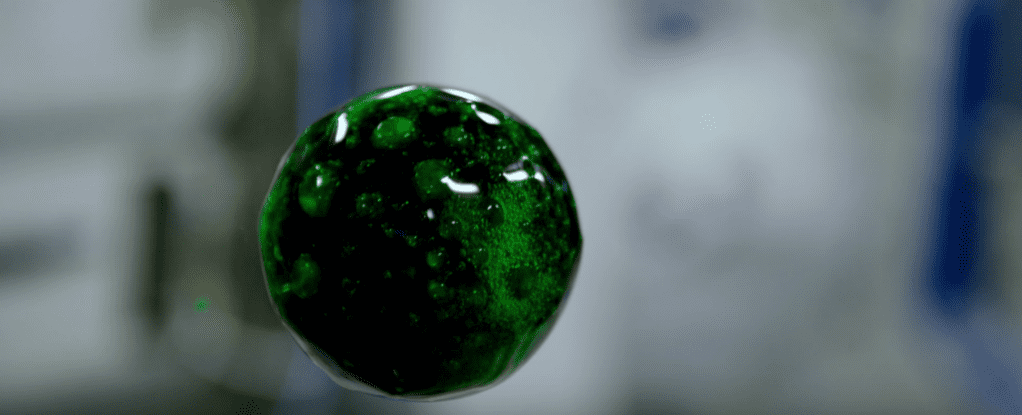An international research effort has lead to the successful creation of the first Bose-Einstein condensate (BEC) in space.

Image via NASA Johnson / YouTube.
Bose-Einstein condensates are a pretty exotic kind of matter. They’re created by chilling atoms of low-density gases to almost as low as temperature will go. In the frigid expanses of near-absolute-zero, the atoms bunch up to create a very dense quantum state.
They’re not just for show, either. Researchers are very interested in getting their (figurative) hands on BECs so they can run their tests and see exactly what these substances can do. The theory, at least, suggests that their weird state would make BECs ideal sensors for certain applications — such as picking up on gravitational waves.
And now, the catch
It’s almost impossible to synthesize BECs under normal conditions on Earth. Rather, it’s next to impossible on any sizeable chunk of space rock; gravity interferes with the devices used to produce and study these condensates.
Our workaround so far was to strap all this (very expensive, mind you) gear onto towers and then drop it. Yep, straight down. This simulates a zero-gravity environment (gravity pulling down is canceled out by inertia pulling upwards) for a few split seconds, making the process viable during the fall. Needless to say, not very much can be achieved during this time, so researchers working with BECs have long pinned their eyes and hopes on an environment that’s proudly gravity-free: outer space.
The U.S. is already hard at work in furbishing these scientists with the toys they need. Last May, NASA blasted a space-based BEC research platform called the Cold Atom Laboratory towards the International Space Station (ISS). However, the laboratory is yet to become fully operational.
So, in the meantime, a quite sizeable group of researchers from Europe and the U.S. have joined hands to launch a tiny, BEC-producing device to orbit. It also contained devices capable of running a host of experiments on the substance. This experiment functioned on the same principle as the tower-dropping ones, by using low-gravity and zero-gravity environments in space.

Image credits Dennis Becker et al., 2018, Nature.
The device consisted of a capsule with, various electronics, a chip of rubidium-87 atoms, some lasers, and a power source. The team activated the device once the rocket hit an altitude of 243 km (150 miles). A stable BEC was produced in just 1.6 seconds, the authors report, and the device carried out 110 preprogrammed experiments in the six minutes before the rocket landed back to Earth.
This BEC marks the first ever substance of its kind produced in space, the team adds.
The paper “Space-borne Bose–Einstein condensation for precision interferometry” has been published in the journal Nature.


